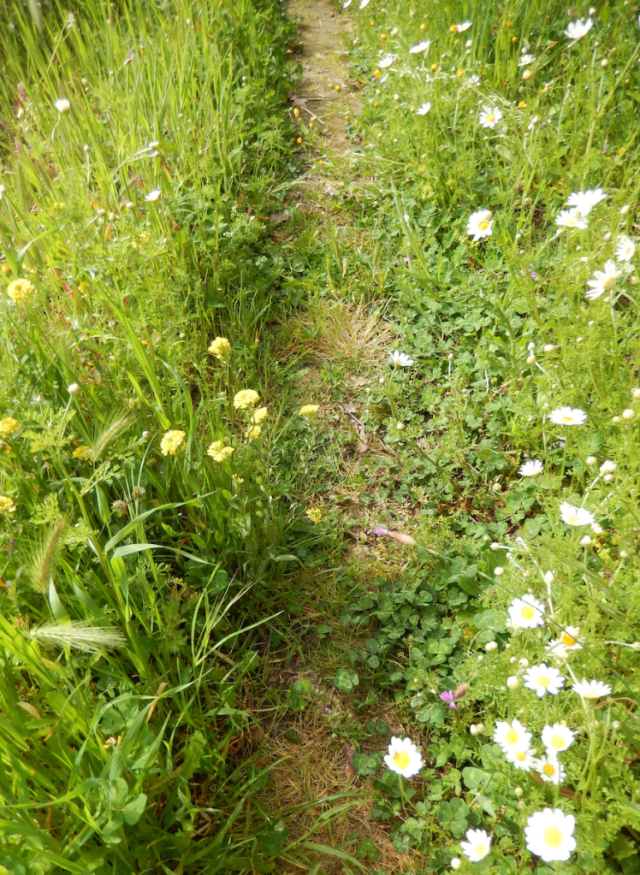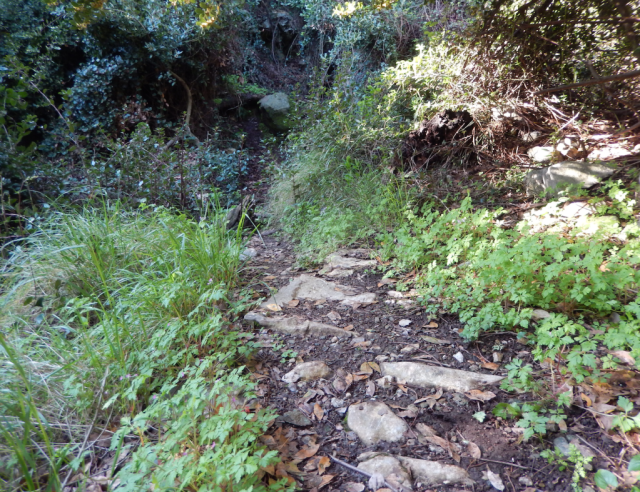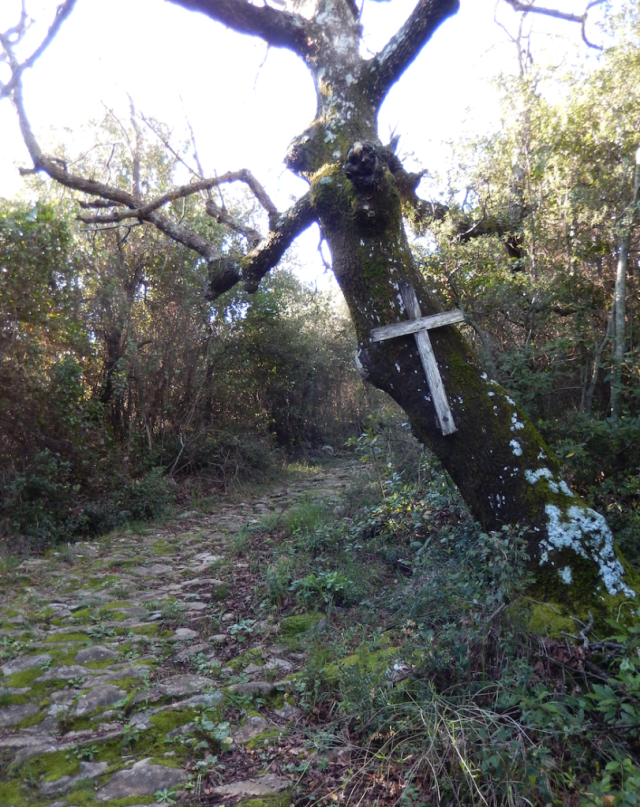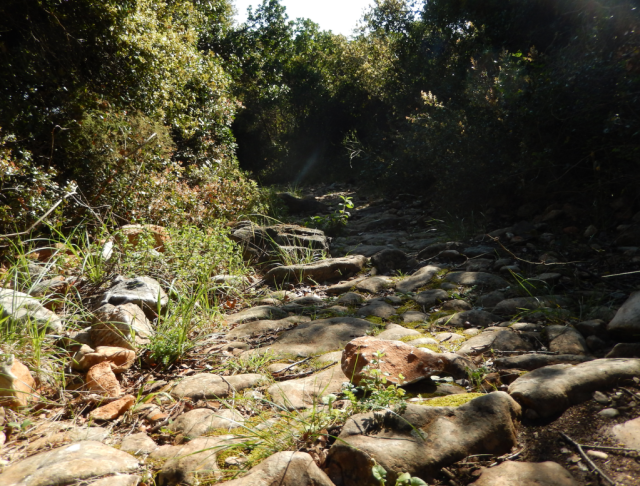
The activity on Mount Athos that I miss the most is walking the old monopatia, the narrow foot- and mule paths that are all over the peninsula.
Many of them are unfortunately destroyed and replaced by gravel roads.
Many thoughts come in my mind while walking these paths, how old are they, who build them, how long did it took to build them?
Could it be that some paths, especially around the mountain itself and the Lavra monastery founded in 963 are from medieval origin? Or even older? In pre Christian times there were several villages on the peninsula that presumably were connected with each other.
Who walked them? During our walks, that can last a whole day, we, most of the time, do not meet anybody. But before building the gravel roads these paths had to be full with pilgrims and monks.
Many monopatia are very nicely paved, with horizontals stones that stand up a bit to drain the rainwater or with a kind of trench in the middle. Sometimes nature itself destroys the paths. Such as an immense landslide that came from the mountain once, between Prodromou and Lavra. Suddenly the paths ends, and then you have to climb through 15 meters of messy bushes, a kind of improvised path. At the end of it , the paved path continues. Wild boars toss the stones on the paths with their snouts in search of food but men with bulldozers are most quilty for the destruction of the monopatia.
Ofcourse not all paths are paved but so trampled by the many pilgrims that vegetation will not grow, but the overgrowth of the path is lurking. Fortunately The Friends of Mount Athos (FoMA) have a path clearing program.
My brother and I have hiked most of the footpaths on Athos at one point or another, but still have the desire to look for paths just beyond the border with the ordinary world. If they are still there?
Here is an overview of the monopatia of my trip in 2019:








Herman Voogd

Achachoucha, Herman, I wholeheartedly agree with your missing the old paths through this wonderful nature!
Thank you for this blog and post. An interesting thing I read many years ago was a prophecy, not sure who, that says something like, “When you see the Holy Mountain wrapped in strings and ribbons know that the end is near.” Much later, I saw a video shot from the summit of Athos looking down on the peninsula and it struck me that it really did look like ribbon wrapped Athos. Apparently the ribbon then refers to the building of roads on Athos that only began, I am told in the 1980s, and that the only way to travel was mainly the footpaths, and that the “string” refers to the stringing of phone and power lines all over the athonite peninsula to connect all the monasteries and sketes. In any case, I am concerned that all these great roads may be doing harm to the natural beauty of Athos.